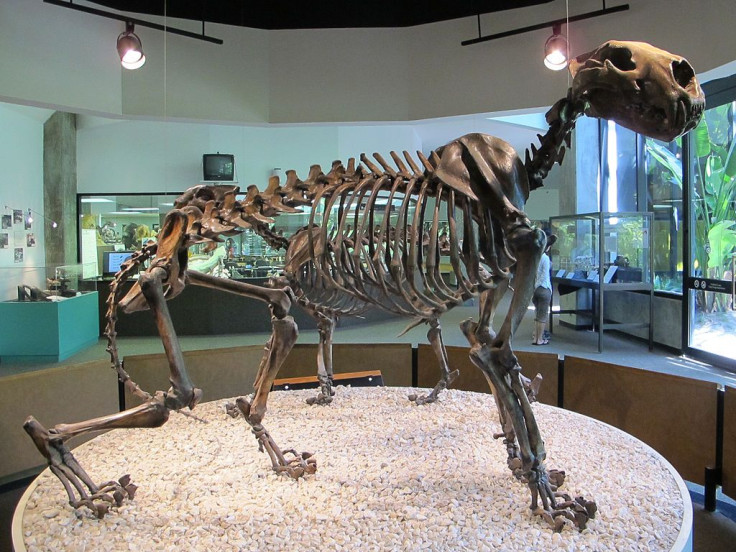25,000-Year-Old Sinkhole In Wyoming Is A Treasure Trove Of Ice Age Fossils

An ancient sinkhole in northern Wyoming has revealed the fossilized remains of hundreds of Ice Age mammals, and scientists say there could be thousands more. Natural Trap Cave, a pit cave that formed some 25,000 years ago near the base of Bighorn Mountains, measures just 15 feet across at its opening but plummets 85 feet to the floor below -- a deadly fall for countless unwary animals.
Researchers say the cold, damp conditions in the cave helped preserve the remains. "It's like a refrigerator,” Julie Meachen, a professor at Des Moines University who recently led a two-week expedition into the cave, told CNN. "Some of the bones we're finding there have collagen in them. That is where you could get the ancient DNA."
Meachen and her team unearthed a number of large, prehistoric mammal bones, including those of the North American lion and American cheetah, two animals that went extinct roughly 12,000 years ago. Researchers also found the fully-intact skeletons of tiny rodents, among other ancient creatures.
Paleontologists discovered Natural Trap Cave in 1970. Several digs were carried out in the next decade until officials with the U.S. Bureau of Land Management boarded up the hole to prevent any future tumbles to the bottom. The cave went unexplored until now.
"We didn't know what to expect,” Meachen said. “We hadn't been there in 30 years and we didn't know what the cave would be like.”
During the initial excavations in the 1970s, paleontologists discovered the fossils of mammoths, short-faced bears, camels and collared lemmings, The Telegraph reported. In all, more than 30,000 specimens have been exhumed.
But that’s not the end. Scientists say the bed of fossils on the cave’s floor measures 10 meters, or 33 feet, deep, and they’ve only just begun to scratch the surface. "It's an incredible site,” Brent Breithaupt a paleontologist for the U.S. Bureau of Land Management who was involved in the recent dig, told the Associated Press. “It definitely is one of the most significant sites that [the Bureau of Land Management] manages and it will provide very, very important information.”
Scientists once thought early North American humans may have played a role in the animals’ deaths by forcing them into the cave. Now, the belief is the sinkhole formed along a major animal migratory corridor, which led to larger numbers of animals stumbling into the hole, National Park Service said.
Researchers believe the oldest remains could date back 100,000 years. Fossils were packed into Rubbermaid containers and sent to universities in the United States and Australia for analysis.
© Copyright IBTimes 2025. All rights reserved.






















